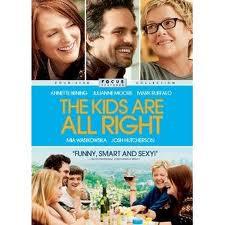As I watched this very enjoyable movie recently, I found myself trying to identify the main character, central story problem, and possible Save the Cat genre, as I tend to do when presented with a story idea or finished script or manuscript. Below (SPOILER ALERT!) is what I came up with…
It’s a true “ensemble” movie, meaning that it consists of several mini-stories, each of which has its own “main character” with a problem, whose point-of-view we take on when we’re watching “their” story. This wasn’t immediately apparent to me, as their problems are presented somewhat subtly. For a while I was wondering if Julianne Moore was really meant to be the central point-of-view, since she’s the one with the biggest problem that we experience from the inside (she’s attracted to, then having an affair with Mark Ruffalo – the sperm donor she and Annette Bening used to each give birth to one of their teenage kids – who they all just met for the first time).
But eventually it became clear to me that we’re to relate, from the INSIDE, to each of the five characters at various times, and each of the five has a clear story problem. Each gets scenes separate from the others where that problem is explored, and each has a clear resolution. Some of the problem aren’t all that big and urgent, which is why this feels more like a “small” movie – it’s got an understated slice-of-life realism that is very appealing, but never grabs the audience by the throat conceptually like most studio-type movies try to do.
So Julianne Moore has a problem regarding feeling like the “beta” in her relationship, which leads to the affair. Annette Bening has the problem of Mark Ruffalo seemingly taking over and shaking up her family (which climaxes with her learning about the affair). Mark Ruffalo has the problem of wanting to be part of this family, wanting Julianne Moore, and not being able to truly find his place there. And the kids each have the problem of questionable friends, lack of true direction or success in their social lives, and wanting something from this “father” relationship.
In the Save the Cat universe, the only real subgenre that has room for an ensemble story like this is the “Issue Institution” (under “Institutionalized”), as seen in The Big Chill, Crash and He’s Just Not That Into You. Usually these kinds of movies have more developed story problems for the multiple “main characters”, which lead to clear resolutions. The stories tend to be more dramatic and complicated, with more turns to them, than what we have here. And they tend to be more separate from each other, though intertwined. Here, you really have one story, which is how Mark Ruffalo shakes up this family, so it doesn’t really feel like five separate stories, but more five points-of-view on the same story. (I guess you could say the “Issue Institution” here was “this family is changed by Mark Ruffalo’s presence” and each person has their own unique take and concerns regarding their part of that “Insitution.”)
I think this is VERY hard to pull off successfully in a script. It’s incredibly execution-dependent, and so much depends on the direction and the cast. I think it makes more sense for a writer-director piece like this, than a script being submitted into the marketplace by a writer hoping to advance their career and maybe get a sale.
That being said, I think it does have an intriguing hook at its premise, which sounds entertaining in a logline: Two teenage kids track down the sperm donor their lesbian parents used, and introduce him to their two moms, which shakes up the family’s dynamics a lot – especially when one of the moms starts to have an affair with him. Sounds entertaining, dramatic, and unique, right? And I did find it to be all of those things.
The entertainment value, as I saw it, was mostly carried by comedy until Julianne Moore and Mark Ruffalo slept together – after which there was great drama. I think the writer-director did a good job of making sure to always entertain. Sometimes small, slice-of-life realism pieces forget that, and there aren’t big enough problems, grabby enough situations, or an entertaining enough tone to engage an audience.
Structurally, I thought it was pretty solid – the kids meeting Mark Ruffalo was a clear Catalyst, and the new situation of Julianne Moore working with him, and him having an ongoing relationship with the kids, was a good Break into Act Two. The affair was a great stakes-rising Midpoint, and Annette Bening’s discovery a great All is Lost or Crisis moment, which interestingly was a crisis for all five characters – from each of their points of view.
I thought the third act resolution was satisfying but kind of subtle, and I found myself feeling bad for Mark Ruffalo and wanting more of a positive resolution for him. Though I didn’t approve of his actions in the affair, I also identified with him as much as I did each of the other four characters, and so I felt it was an “unhappy” ending for him, even if it was a moderately happy ending for the others. I wouldn’t have minded more “story” for the third act, and bigger changes and resolutions for all. But overall I really appreciated the film and can see why it’s gotten so much praise.

